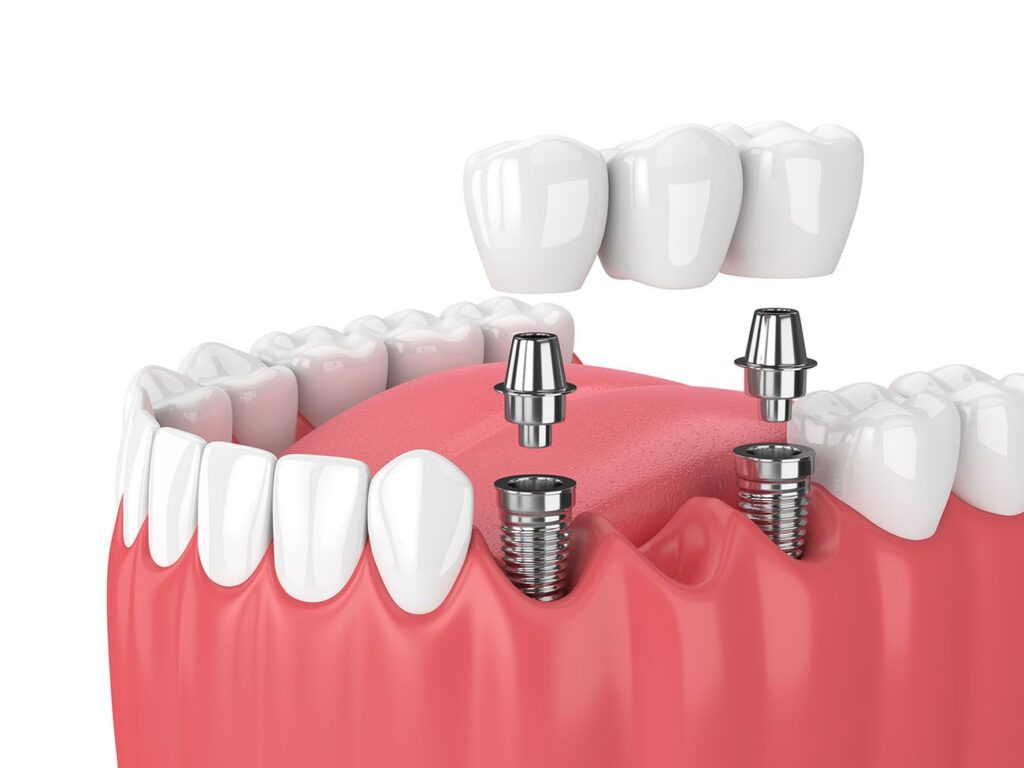Losing teeth is not an uncommon occurrence. Many people (nearly 69%) will experience the loss of an adult tooth. With that in mind, you should be more knowledgeable about your replacement options, whether you have lost a tooth or not. There are many selections that can provide you with the smile you desire and the lifestyle or routine that you need.
It is vital to replace a tooth as soon as possible in order to keep your mouth in proper working order. Your teeth all work together as a complete unit, which makes a quick replacement necessary. When one tooth is lost, the others will shift to compensate. Once your teeth shift, it can make it difficult to eat or speak. Replacing this tooth can help to avoid any problems that can develop in your bite and facial structure.
There are two options that are very common and extremely popular because of how they look and feel. Dental bridges and implants can replace your missing teeth and remove the stress of caring for more complicated routines.

What Are Dental Bridges?
Dental bridges are false tooth structures that “bridge” the gap between your missing teeth. Bridges utilize your existing natural teeth or other dental implants to hold themselves in place. Whether you are missing one tooth or several, bridges can be used to fill in your missing teeth.
What Are the Benefits of Bridges?
Dental bridges are much more cost-effective and require fewer dentist visits than dental implants. Since there is not an invasive surgery, there is very little, if any, recovery time.
What Are the Risks with Bridges?
Dental bridges are not permanent structures. On average, they will need replacement every 5-7 years, which means you may pay more money in the long run.
Patients with dental bridges can experience a higher rate of developing cavities and tooth decay compared with dental implants. With dental bridges, there is a risk that it may damage the surrounding healthy teeth.
What Are Dental Implants?
Dental implants are prosthetic tooth structures that take the place of the root. Usually made of titanium, implants sit surgically in the jawbone for a secure and permanent hold. Dentsits refer to the titanium tooth root as an anchor. A section called an abutment holds a crown—the white, tooth-shaped object—made of porcelain.
What Are the Benefits of Implants?
Dental implants are much more permanent structures. With proper care, they can last 15 years or longer. Unlike bridges, dental implants keep their natural appearance much longer. While implants are a much more invasive procedure, there is a smaller chance of damaging your surrounding teeth.
What Are the Risks with Implants?
While dental implants have many benefits, there are some downsides. Implants are more expensive upfront than dental bridges and are less likely to be covered by insurance.
Compared to dental bridges, the process of getting implants is much longer. Getting dental implants may take up to 6 months because your teeth have to heal in between each stage. With any surgery, there is a risk of infection, possible damage to the soft tissues, or even the jawbone.
